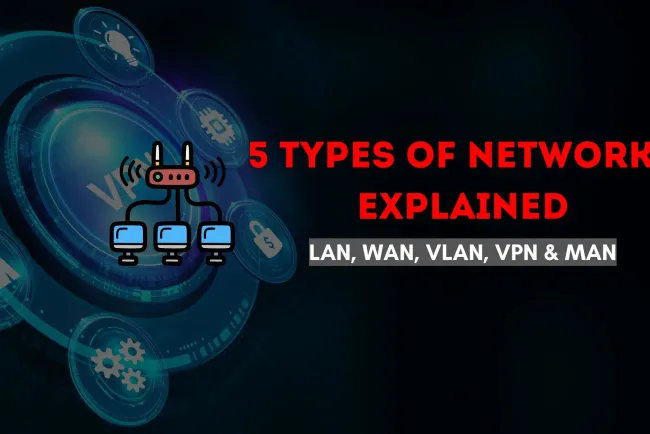Essential Tools and Technologies Every Penetration Tester Should Master for Effective Security Assessments | Comprehensive Guide
Penetration testing plays a crucial role in identifying vulnerabilities and assessing the security of systems, networks, and applications. To become an effective penetration tester, it’s important to master a variety of tools and technologies that enable efficient scanning, exploitation, and analysis. In this blog, we explore the most essential tools for penetration testing, including Nmap, Burp Suite, Metasploit, Wireshark, Nessus, Kali Linux, Aircrack-ng, and John the Ripper. These tools assist penetration testers in automating tasks, identifying security weaknesses, and gaining access to systems in controlled environments. Mastering these tools will help testers stay ahead of emerging threats and provide comprehensive security assessments.

Table of Contents
- What is Penetration Testing?
- Nmap (Network Mapper)
- Burp Suite
- Metasploit Framework
- Wireshark
- Nessus
- Kali Linux
- Aircrack-ng
- John the Ripper
- Conclusion
- FAQs
Penetration testing, often referred to as ethical hacking, is an essential aspect of cybersecurity. As a penetration tester, your role is to identify vulnerabilities in systems, networks, and applications before malicious hackers can exploit them. To effectively carry out penetration testing, mastering a wide range of tools and technologies is crucial. These tools are designed to automate repetitive tasks, identify vulnerabilities, exploit weaknesses, and assess the overall security of a target. In this blog, we will explore the most important tools and technologies that every aspiring penetration tester should master to excel in their role.
What is Penetration Testing?
Penetration testing, also known as ethical hacking, is the practice of simulating a cyberattack on a system, network, or application to find security weaknesses that could potentially be exploited by malicious actors. Penetration testers use a combination of automated tools and manual techniques to assess security configurations, identify vulnerabilities, and exploit flaws in the system.
As a penetration tester, you need to be proficient with various tools and technologies that help you carry out assessments and exploits effectively. Here are some of the key tools and technologies that you should consider mastering:
1. Nmap (Network Mapper)
Nmap is one of the most widely used network scanning tools in the cybersecurity community. It is an open-source tool that helps penetration testers discover devices and services on a computer network. Nmap is primarily used for network discovery and vulnerability scanning, allowing penetration testers to identify open ports, discover devices, and detect services running on a network.
Key Features of Nmap:
- Network exploration and mapping
- Port scanning
- Service and version detection
- OS fingerprinting
- Scripting engine for advanced tasks
Why Master Nmap?
Nmap is invaluable for discovering live hosts on a network, identifying vulnerabilities in those hosts, and performing reconnaissance during penetration testing. Mastery of Nmap allows penetration testers to gain valuable information about the target environment before moving on to more advanced exploitation techniques.
2. Burp Suite
Burp Suite is one of the most popular web application security testing tools. It is widely used for identifying vulnerabilities such as SQL injection, cross-site scripting (XSS), and cross-site request forgery (CSRF) in web applications. Burp Suite offers a suite of integrated tools for scanning, crawling, and exploiting vulnerabilities in web applications.
Key Features of Burp Suite:
- Intercepting proxy for web traffic analysis
- Web vulnerability scanning
- Intruder tool for automated attack customization
- Repeater for manual request modification
- Decoder for encoding/decoding data
Why Master Burp Suite?
Burp Suite is a go-to tool for web application penetration testers. By mastering Burp Suite, penetration testers can perform thorough web application assessments, customize automated attacks, and manually exploit vulnerabilities to assess the robustness of a web application’s security.
3. Metasploit Framework
Metasploit is an open-source penetration testing framework that provides a collection of tools for exploiting vulnerabilities in a network. It contains a wide array of exploits, payloads, and auxiliary modules that can help penetration testers gain access to a system and test its security defenses.
Key Features of Metasploit:
- Pre-built exploit modules for common vulnerabilities
- Payload generation for attacking systems
- Post-exploitation modules for maintaining access
- Automated exploitation through scripting
- Integration with other tools like Nmap
Why Master Metasploit?
Metasploit is one of the most powerful tools for penetration testers. By mastering Metasploit, penetration testers can automate the exploitation of known vulnerabilities and gain access to the target system. It is particularly useful for testing the efficacy of security defenses and performing controlled exploits.
4. Wireshark
Wireshark is a network protocol analyzer that captures and inspects data packets in real time. It allows penetration testers to analyze the traffic flowing across a network and detect potential vulnerabilities or malicious activity. Wireshark is crucial for network penetration testing, as it helps identify issues like unencrypted traffic, weak protocols, or improper network configurations.
Key Features of Wireshark:
- Real-time network traffic capture
- Deep inspection of individual packets
- Protocol analysis for network protocols (HTTP, TCP/IP, DNS, etc.)
- Packet filtering for targeted analysis
- Decryption of encrypted protocols (with keys)
Why Master Wireshark?
Mastering Wireshark is essential for penetration testers who focus on network security. It enables testers to capture and analyze network traffic to find hidden security issues, monitor suspicious behavior, and investigate attacks such as Man-in-the-Middle (MitM).
5. Nessus
Nessus is a widely-used vulnerability scanner that helps penetration testers identify vulnerabilities in systems, network devices, and applications. It provides an extensive database of known vulnerabilities, misconfigurations, and security flaws that can be exploited by attackers. Nessus can perform both remote and local scans to discover security issues.
Key Features of Nessus:
- Comprehensive vulnerability scanning
- Detection of system misconfigurations
- Automated scanning and reporting
- Integration with other security tools
- Detailed vulnerability analysis and recommendations
Why Master Nessus?
Nessus is an essential tool for vulnerability management and assessment. By mastering Nessus, penetration testers can conduct comprehensive scans of networks and systems to identify vulnerabilities that could be exploited during the penetration testing process.
6. Kali Linux
Kali Linux is a Linux distribution specifically designed for penetration testing and security auditing. It comes pre-packaged with a vast array of penetration testing tools, including Nmap, Metasploit, Burp Suite, and more. Kali Linux is widely used by penetration testers to conduct assessments and exploit vulnerabilities in various environments.
Key Features of Kali Linux:
- Pre-installed penetration testing tools
- Advanced wireless network testing capabilities
- Support for multiple platforms (VM, bare metal, etc.)
- Open-source and customizable
Why Master Kali Linux?
Kali Linux is the go-to operating system for penetration testers. It provides an all-in-one environment for conducting penetration tests, making it easier to learn and use the necessary tools. Mastering Kali Linux is essential for any penetration tester looking to work efficiently in a testing environment.
7. Aircrack-ng
Aircrack-ng is a suite of tools used for wireless network security testing. It is commonly used for testing Wi-Fi networks for weak encryption and vulnerabilities such as WEP or WPA cracking. Aircrack-ng can be used to intercept network traffic, analyze it, and attempt to break weak encryption keys.
Key Features of Aircrack-ng:
- Wireless network monitoring and sniffing
- WEP and WPA key cracking
- Packet injection for testing network defenses
- Support for various wireless network adapters
Why Master Aircrack-ng?
For penetration testers working with wireless networks, Aircrack-ng is a must-have tool. It is essential for testing the security of Wi-Fi networks and ensuring they are protected against common attacks such as brute force or dictionary attacks.
Conclusion
Penetration testing requires proficiency in a wide variety of tools and technologies that help assess the security of systems, networks, and applications. By mastering tools such as Nmap, Burp Suite, Metasploit, Wireshark, Nessus, Kali Linux, Aircrack-ng, and John the Ripper, you can significantly enhance your penetration testing capabilities. These tools help automate tasks, identify vulnerabilities, perform exploits, and analyze network traffic, ensuring that you can carry out comprehensive and effective security assessments. Mastering these tools and continuously learning new techniques is essential to becoming a successful penetration tester.
FAQs:
What is penetration testing?
Penetration testing is the practice of simulating cyberattacks to identify and exploit vulnerabilities in systems, networks, and applications.
Why do penetration testers need tools?
Tools are essential for automating tasks, identifying vulnerabilities, scanning for weaknesses, and exploiting flaws in a system during penetration testing.
What is Nmap and how is it used in penetration testing?
Nmap is a network scanning tool used for discovering devices on a network, mapping out the network, and identifying open ports and services.
What is Burp Suite?
Burp Suite is a web application security testing tool that helps in identifying vulnerabilities like XSS, SQL injection, and more in web applications.
How does Metasploit help in penetration testing?
Metasploit is a framework for developing and executing exploit code against remote target machines, allowing testers to automate the process of exploiting vulnerabilities.
What is the importance of Wireshark in penetration testing?
Wireshark is a network protocol analyzer used for capturing and analyzing network traffic to detect vulnerabilities or malicious activity in real-time.
What is Nessus used for?
Nessus is a vulnerability scanner that helps identify security flaws, misconfigurations, and vulnerabilities in networks and systems.
What is Kali Linux and why is it essential for penetration testers?
Kali Linux is a Linux distribution designed specifically for penetration testing. It comes pre-installed with a variety of tools necessary for conducting security assessments.
How can Aircrack-ng be useful for penetration testers?
Aircrack-ng is used to assess the security of wireless networks by capturing and analyzing packets, cracking weak WEP/WPA keys, and performing wireless attacks.
What does John the Ripper do?
John the Ripper is a password cracking tool used to assess password strength by attempting to crack password hashes using brute force and dictionary attacks.
What are the best practices when using Nmap?
Best practices include using multiple scan techniques, filtering out irrelevant results, and combining Nmap with other tools for comprehensive analysis.
Can Burp Suite be used for vulnerability scanning?
Yes, Burp Suite can perform vulnerability scanning for common issues like XSS, SQL injection, and other web application vulnerabilities.
How can Metasploit be used for post-exploitation tasks?
After gaining access to a system, Metasploit offers post-exploitation modules for maintaining access, gathering information, and escalating privileges.
What should I look for when analyzing network traffic with Wireshark?
Look for unencrypted sensitive data, suspicious communication, unauthorized access, and any abnormal patterns in network behavior.
How does Nessus perform vulnerability scanning?
Nessus scans systems and networks to identify vulnerabilities, misconfigurations, and patches that need to be applied to improve security.
How does Kali Linux simplify penetration testing?
Kali Linux simplifies penetration testing by offering a pre-configured environment with essential tools for testing, exploiting, and securing systems.
What kind of wireless attacks can Aircrack-ng perform?
Aircrack-ng can perform packet injection, network sniffing, and WEP/WPA key cracking to assess the security of wireless networks.
Why is password cracking important in penetration testing?
Password cracking helps penetration testers assess the strength of password policies and identify weak or easily guessable passwords within systems.
How do penetration testers use Metasploit’s scripting capabilities?
Metasploit’s scripting capabilities allow penetration testers to automate exploits, create custom payloads, and perform efficient attacks.
What network protocols does Wireshark support for analysis?
Wireshark supports a wide range of network protocols including HTTP, TCP, UDP, DNS, SMTP, and many more for comprehensive traffic analysis.
What is the difference between a vulnerability scanner and an exploitation tool?
A vulnerability scanner identifies potential security weaknesses, while an exploitation tool, such as Metasploit, is used to actually exploit those vulnerabilities.
How can I integrate Nmap with other penetration testing tools?
Nmap can be integrated with tools like Metasploit to automate the process of discovering and exploiting vulnerabilities on a network.
How can Burp Suite assist with manual testing?
Burp Suite’s Repeater and Intruder tools allow penetration testers to manually modify HTTP requests, test for vulnerabilities, and automate attacks.
What is a payload in penetration testing?
A payload is code executed on a target system after a vulnerability is exploited. It allows attackers to control the system, escalate privileges, or extract data.
How do penetration testers keep track of vulnerabilities identified using Nessus?
Nessus provides detailed reports highlighting vulnerabilities and misconfigurations, allowing testers to prioritize issues and take corrective actions.
What types of attacks can Aircrack-ng detect?
Aircrack-ng detects attacks like WEP and WPA key cracking, man-in-the-middle attacks, and attempts to break encryption on wireless networks.
What security testing categories are covered by Wireshark?
Wireshark helps in assessing network security, monitoring encrypted and unencrypted traffic, detecting unauthorized access, and identifying protocol weaknesses.
How can Kali Linux help new penetration testers?
Kali Linux offers a user-friendly environment for beginners with built-in tools and a large community, making it easier to get started with penetration testing.
What is the importance of a vulnerability scan before exploiting a system?
A vulnerability scan identifies weaknesses that could be exploited later. It’s an essential first step in penetration testing before performing manual attacks.
How do penetration testers continuously improve their skills with these tools?
Penetration testers can improve by regularly practicing on platforms like TryHackMe, Hack The Box, participating in Capture the Flag (CTF) challenges, and staying up to date with new vulnerabilities and tools.












![Top 10 Ethical Hackers in the World [2025]](https://www.webasha.com/blog/uploads/images/202408/image_100x75_66c2f983c207b.webp)

![[2025] Top 100+ VAPT Interview Questions and Answers](https://www.webasha.com/blog/uploads/images/image_100x75_6512b1e4b64f7.jpg)









